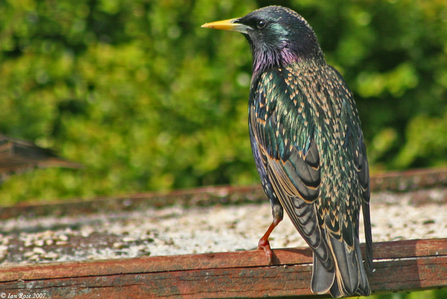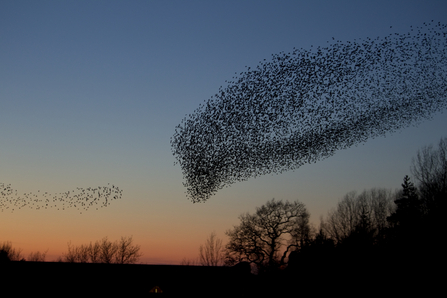Throughout the winter, my pre-work chores at home have been accompanied by the occasional chattering conversation of the resident starlings. Now that spring is almost here, that quiet chuntering of practised notes is building into a well-rehearsed symphony, drawing on all elements of their complex repertoire of notes and phrases. Starlings are close relatives of Mynas and share their ability to mimic sounds. ‘My’ resident starlings, true to their North Pennine roots, draw some of their lyrical inspiration from the ground-nesting waders who will soon be returning here to breed. As such, as I go about my jobs, I listen to the call of lapwing, redshank, and curlew descending from the barn beams above me, interspersed with the starlings’ remixed version that includes their own whistles, clicks and whirrs.
The UK’s resident species of starling, common starling Sturnus vulgaris is anything but common in looks. Other members of the family Sturnidae include the appropriately named ‘superb’ and ‘glossy’ starlings and the equally ostentatious Hildebrandt’s and blue-eared starlings, all of whom live in warmer climes. They and other members of the wider starling family are generally a showy bunch and our common starling doesn’t let the side down. Admittedly, the newly fledged youngsters of the year are rather drab brown, making up for their lack of visual impact with a lot of noise. But, as with many bird species, it’s the adult males who pull out all the stops. Their dark, glossy plumage is peppered with white flecks but, by the time breeding season arrives, many of these pale feather tips have worn off, particularly from their long throat feathers, unveiling iridescent shades of green and purple. As the male sings, these throat feathers are puffed out, glistening and shining as they catch the light. This visual display provides the backdrop to the male’s lengthy and varied song repertoire, drawn from his many sources of inspiration and mimicry, and announced to all from a suitably prominent podium.



